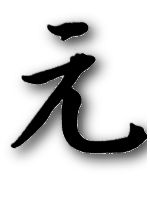


YUAN1279 - 1368 |

|
By the mid-thirteenth century, the Mongols had subjugated north China, Korea, and the Muslim kingdoms of Central Asia and had twice penetrated Europe. With the resources of his vast empire, Kublai Khan (1215-94), a grandson of Genghis Khan (1167?-1227) and the supreme leader of all Mongol tribes, began his drive against the Southern Song. Even before the extinction of the Song dynasty, Kublai Khan had established the first alien dynasty to rule all China - the Yuan (1279-1368).
Although the Mongols sought to govern China through traditional institutions, using Chinese (Han) bureaucrats, they were not up to the task. The Han were discriminated against socially and politically. All important central and regional posts were monopolized by Mongols, who also preferred employing non-Chinese from other parts of the Mongol domain - Central Asia, the Middle East, and even Europe - in those positions for which no Mongol could be found. Chinese were more often employed in non-Chinese regions of the empire.
As in other periods of alien dynastic rule of China, a rich cultural diversity developed during the Yuan dynasty. The major cultural achievements were the development of drama and the novel and the increased use of the written vernacular. The Mongols' extensive West Asian and European contacts produced a fair amount of cultural exchange. Western musical instruments were introduced to enrich the Chinese performing arts.
From this period dates the conversion to Islam, by Muslims of Central Asia, of growing numbers of Chinese in the northwest and southwest. Nestorianism and Roman Catholicism also enjoyed a period of toleration. Lamaism (Tibetan Buddhism) flourished, although native Taoism endured Mongol persecutions. Confucian governmental practices and examinations based on the Classics, which had fallen into disuse in north China during the period of disunity, were reinstated by the Mongols in the hope of maintaining order over Han society. Advances were realized in the fields of travel literature, cartography and geography, and scientific education. Certain key Chinese innovations, such as printing techniques, porcelain production, playing cards, and medical literature, were introduced in Europe, while the production of thin glass and cloisonné became popular in China.
The first records of travel by Westerners date from this time. The most famous traveler of the period was the Venetian Marco Polo, whose account of his trip to "Cambaluc," the Great Khan's capital (now Beijing), and of life there astounded the people of Europe.
The Mongols undertook extensive public works. Road and water communications were reorganized and improved. To provide against possible famines, granaries were ordered built throughout the empire. The city of Beijing was rebuilt with new palace grounds that included artificial lakes, hills and mountains, and parks. During the Yuan period, Beijing became the terminus of the Grand Canal, which was completely renovated. These commercially oriented improvements encouraged overland as well as maritime commerce throughout Asia and facilitated the first direct Chinese contacts with Europe.
Chinese and Mongol travelers to the West were able to provide assistance in such areas as hydraulic engineering, while bringing back to the Middle Kingdom new scientific discoveries and architectural innovations. Contacts with the West also brought the introduction to China of a major new food crop - sorghum - along with other foreign food products and methods of preparation.
Rivalry among the Mongol imperial heirs, natural disasters, and numerous peasant uprisings led to the collapse of the Yuan dynasty in 1368.

The text is based on, CHINA - a Country Study by Federal Research Division, Library of Congress, Edited by Robert L. Worden, Andrea Matles Savada and Ronald E. Dolan. Research Completed July 1987. This version and Webpage © Jan-Erik Nilsson, Gothenburg, Sweden, 2002